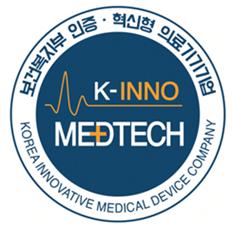Innovative medical device companies have continued to record sales growth despite the challenges posed by Covid-19. These companies also increased new investment and R&D spending after becoming certified as innovative medical device companies, demonstrating the positive effects of the “innovative medical device company certification system.”
The Korea Health Industry Promotion Institute (KHIDI) recently published a report, “Performance analysis of innovative medical device companies in 2023,” analyzing the system’s effects on corporate operations.

Under the Medical Device Industry Act, the system certifies and supports medical device companies with excellent R&D investments as innovative medical device companies to promote and revitalize the domestic medical device industry.
Since its implementation, 46 companies have been certified as innovative medical device companies on three occasions. The report analyzed 26 companies from the first round of innovative medical device companies that applied for certification extensions.
Innovative medical device companies are composed of companies with expertise in various technology fields; all manufacturing is set up with domestic capital. They comprised 21 small firms (81 percent), four midsize companies (15 percent), and one large enterprise (4 percent).
Innovative medical device companies' main products are imaging and measurement, dental, and in vitro diagnostics. In addition, companies specializing in various technology fields, such as promising technology fields like robotics and digital health, and technology for solving social problems, including aging and health security, were certified as innovative medical device companies.
According to the Medical Device Industry Act, companies selected as innovative medical device companies can receive preferential treatment in national R&D projects.
These benefits include granting points when selecting government R&D and market entry support projects and operating R&D and market entry projects exclusively for innovative medical device companies. In addition, they can receive tax and regulatory relief benefits, such as special exemptions under the Tax Exemption Limitation Act and the Local Tax Exemption Limitation Act, special exemptions for building research facilities, and exemptions from various levies.
The sales of innovative medical device companies increased from 3.47 trillion won ($2.66 billion) before certification (2017-2019) to 5.50 trillion won after certification (2020-2022), an increase of about 55 percent.
Most innovative medical device companies increased their sales after certification compared to before certification. Only one of the surveyed companies experienced a slight decrease in sales of less than 10 percent. Innovation-leading companies with over 50 billion sales won all experienced sales increases of more than 10 percent from before certification.
The increase in sales of innovative medical device companies has also led to an overall increase in company size, with the proportion of innovation-leading companies increasing from 15 percent to 38 percent by the time they applied to extend their certification in 2023 and the proportion of fast-track companies decreasing from 85 percent to 62 percent.
In addition, nine “innovative leapfrog companies” with less than 50 billion won in sales were certified as innovative medical device companies and attracted 12 new investments from venture capitalists and other external investors, totaling about 366 billion won.
Despite the difficulties in business management due to Covid-19, innovative medical device companies have recorded continuous sales growth. In contrast, according to the report, R&D-oriented companies with lower sales have secured sustainability through external investment.
The R&D expenditure of innovative medical device companies increased by about 54 percent, from 441.4 billion won before certification to 679.8 billion won after certification. The ratio of R&D investment to sales of innovative medical device companies has remained above 10 percent on average before and after certification. The average R&D expenditure increased from 5.7
Innovative medical device companies also made progress in overseas expansion. Overseas exports of innovative medical device companies increased from 2.28 trillion won before certification to 3.239 trillion won after certification, an increase of about 60 percent. This was achieved despite the decrease in demand in global markets, except for in vitro diagnostic medical devices, due to Covid-19.
Most innovative medical device companies have increased their exports after receiving the certification, especially the nine companies with less than 1 billion sales won. Their exports increased sharply from 9.2 billion won before certification to 100.8 billion won after certification.
In addition, innovative medical device companies exported to 160 countries, with the top five countries being China, the United States, Russia, India, and Japan, which accounted for more than 40 percent of the total exports. As of 2022, innovative medical device companies are operating 100 local subsidiaries, with 48 (48 percent) in Asia, 24 (24 percent) in North America, 19 (19 percent) in Europe, and 9 (9 percent) in other regions.
"Despite the challenges posed by Covid-19, innovative medical device companies have continued to post steady sales growth," KHIDI said. "Innovative medical device companies are contributing to the revitalization of clinical research in Korea by expanding R&D investments in clinical trials to validate and improve product performance, not just product development."
It went on to say, "Companies are expanding R&D activities through collaboration with domestic and foreign institutions, and the partners are diversifying from hospitals to companies and research institutes, so it is necessary for the government to continue to support R&D cooperation.
"In particular, innovative medical device companies are promoting overseas expansion by establishing local subsidiaries in various regions, and government support is needed," the state-funded agency added.

